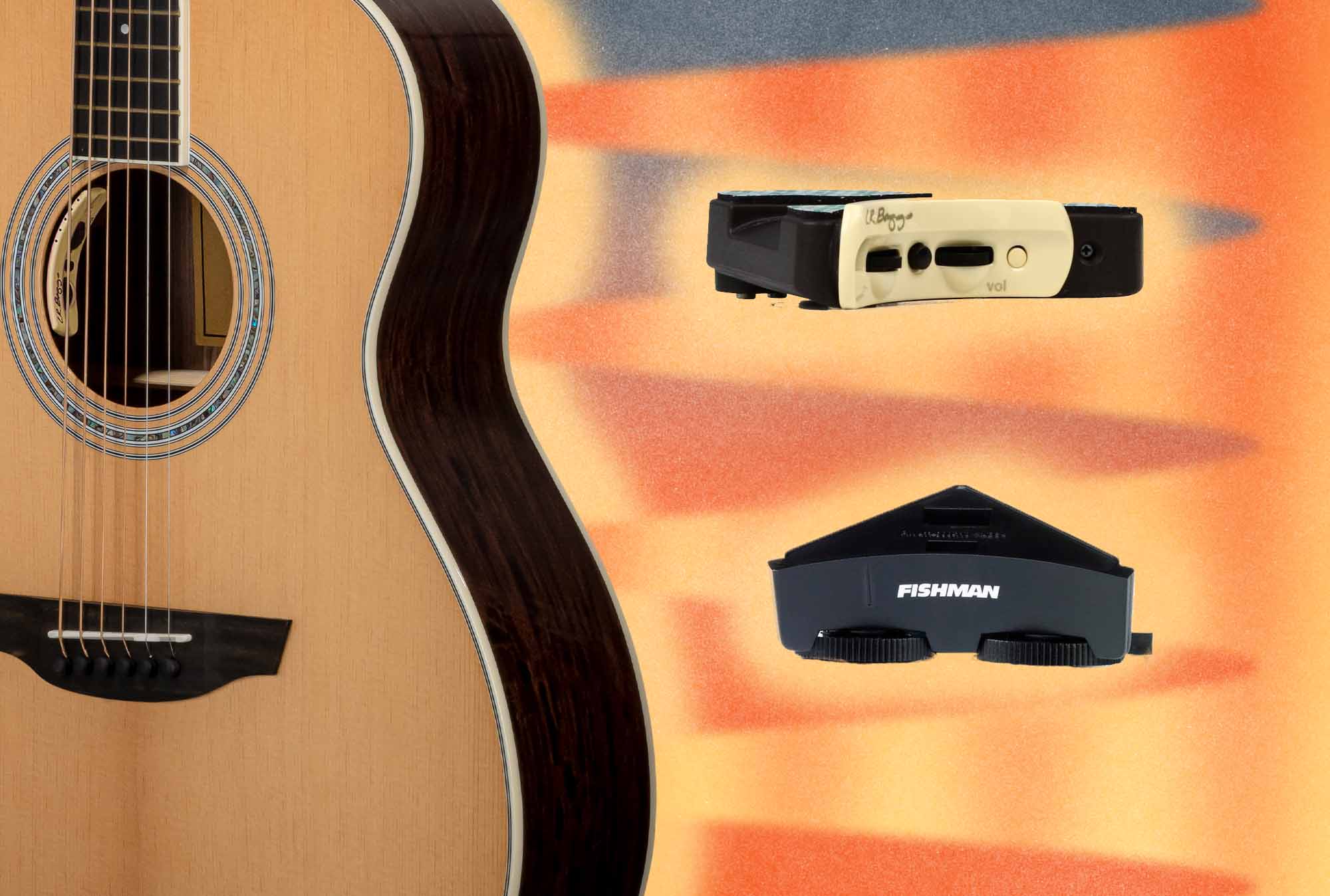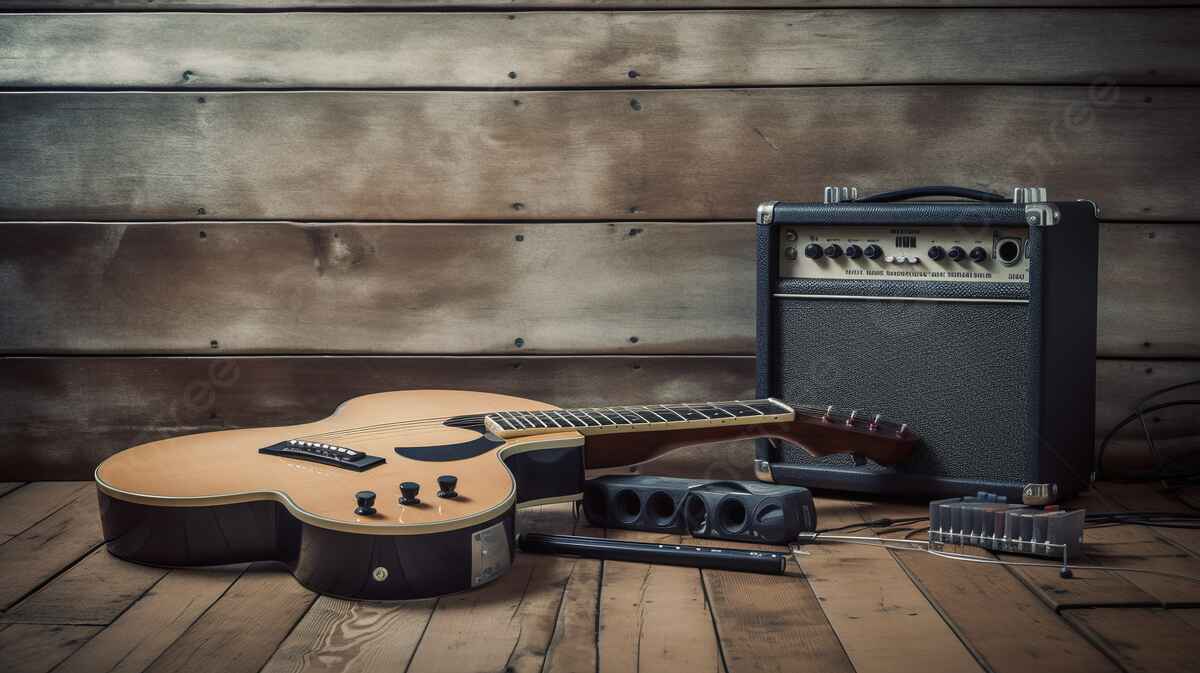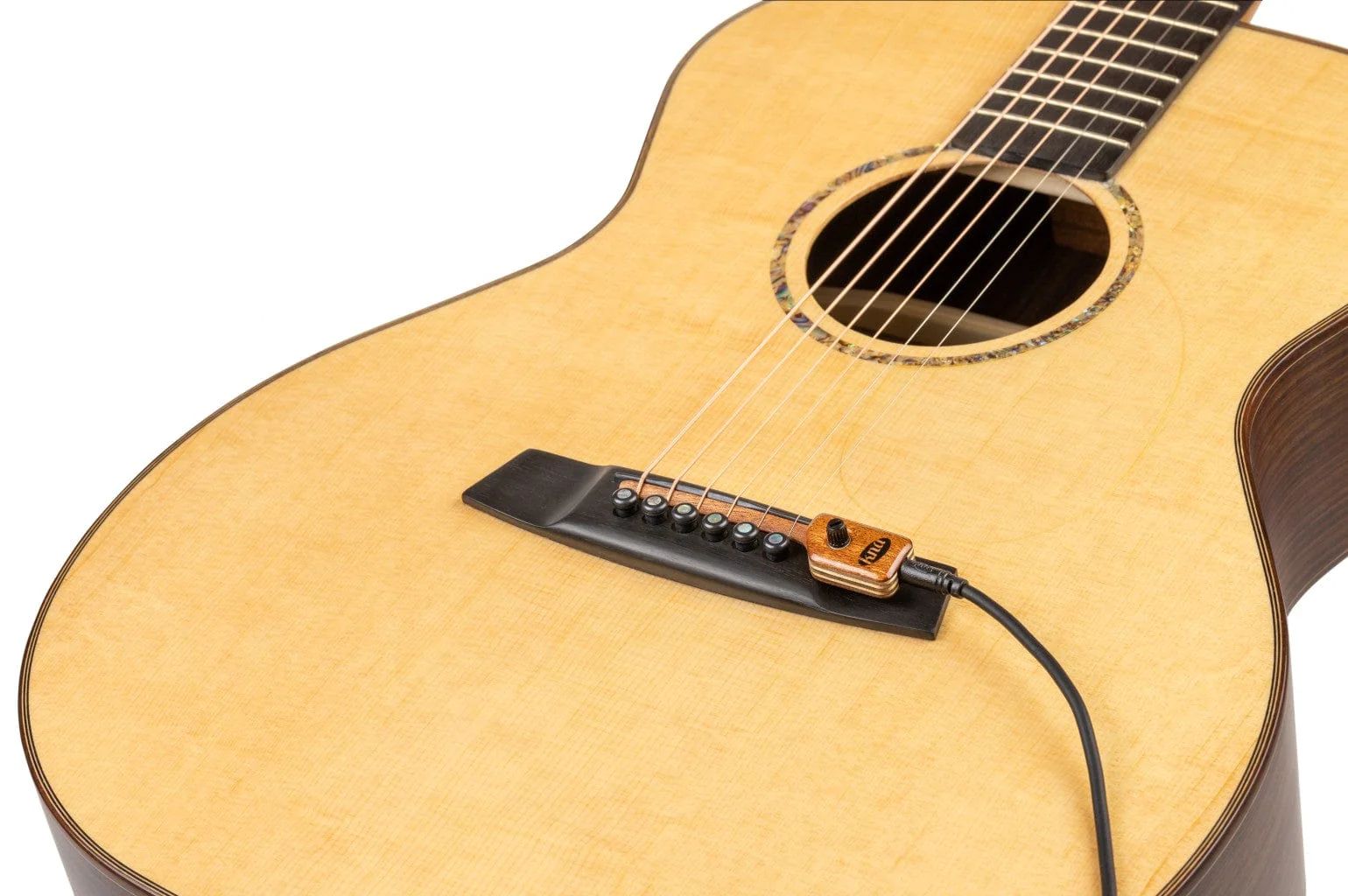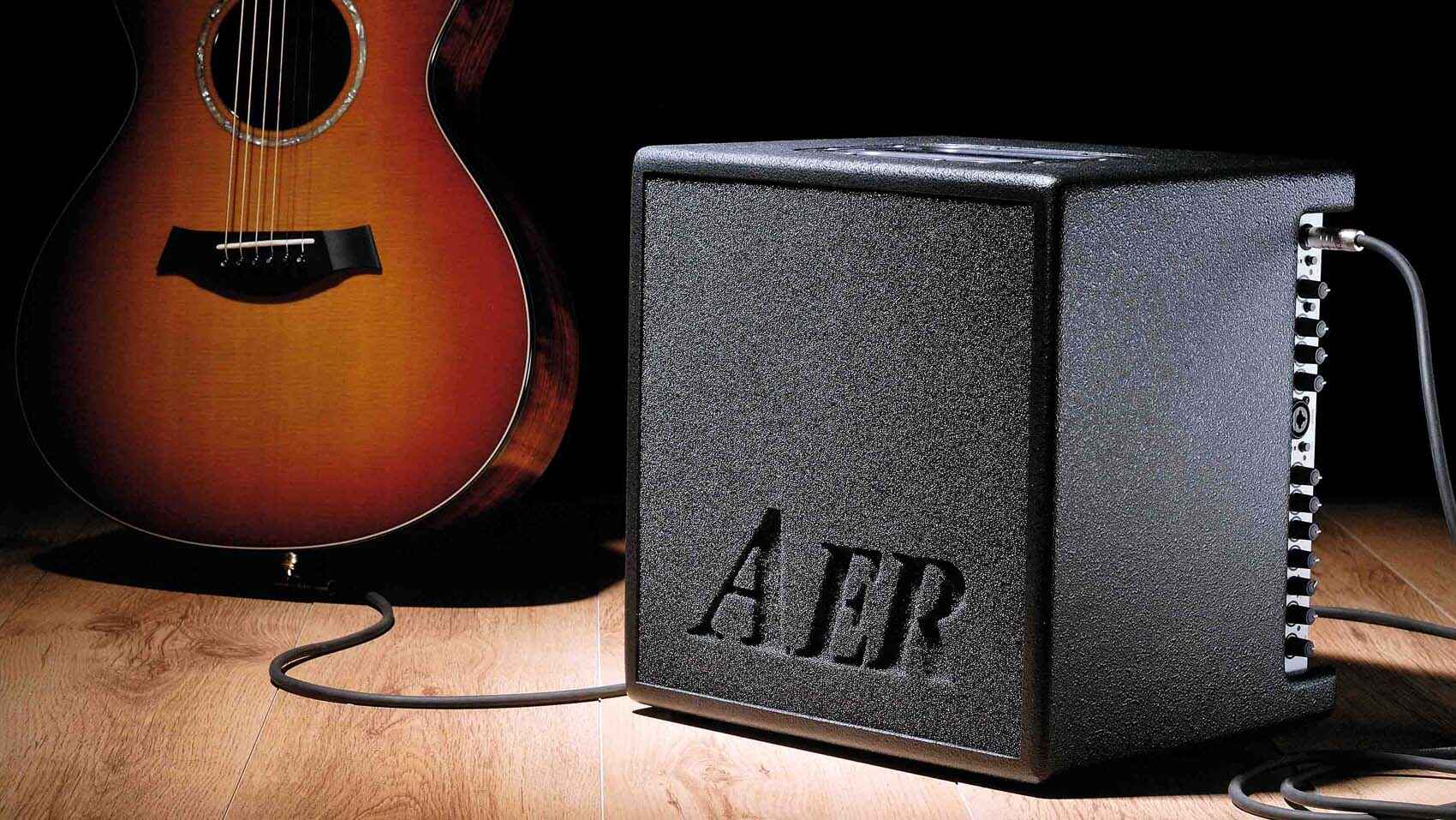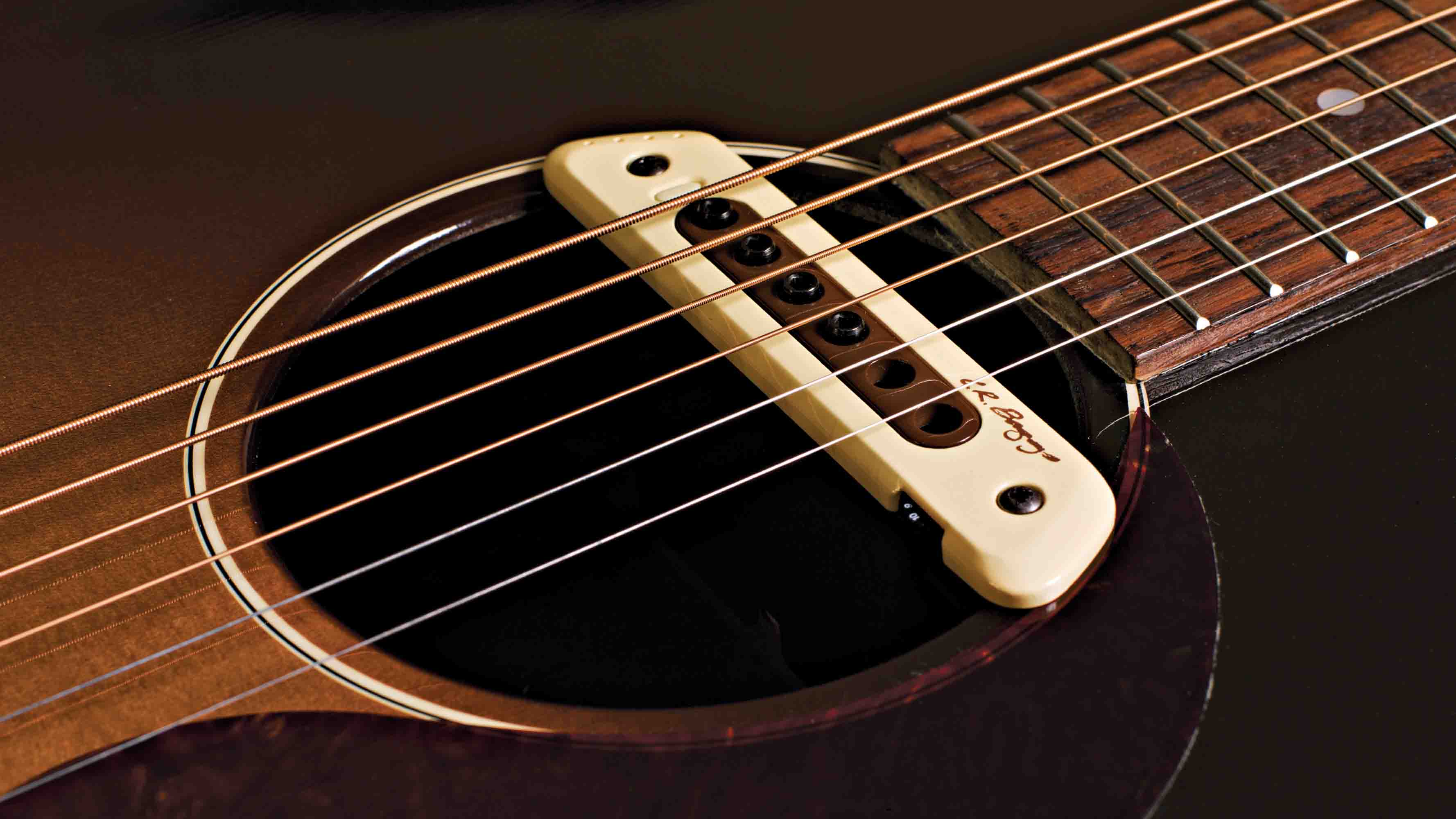Introduction
When it comes to playing the acoustic guitar, having a high-quality pickup installed is essential for amplifying its beautiful sound. Acoustic guitar pickups are devices that capture the vibrations of the strings and convert them into electrical signals, allowing the guitar to be connected to an amplifier or sound system.
There are various types of pickups available, each with its own unique characteristics and tonal qualities. As a guitarist, understanding the different types of pickups and how they work can help you make an informed decision when it comes to choosing the best one for your acoustic guitar.
In this article, we will explore the different types of acoustic guitar pickups and discuss their pros and cons. Whether you’re a seasoned professional or a beginner looking to upgrade your instrument, this guide will provide valuable insights to help you make the right choice.
By the end of this article, you will have a better understanding of the various types of acoustic guitar pickups and be equipped with the knowledge to select the one that suits your playing style and preferences.
Let’s dive in and explore the world of acoustic guitar pickups!
Magnetic Pickups
Magnetic pickups are one of the most common types of pickups used in electric guitars, and they can also be installed in acoustic guitars. The pickup consists of one or more magnets surrounded by a coil of wire. When the strings vibrate, they disturb the magnetic field, generating electrical signals that are picked up by the coil.
One of the advantages of magnetic pickups is their ability to capture a warm and rich tone, making them popular among guitarists who prefer a more traditional sound. They are particularly suitable for genres such as blues, rock, and country music.
There are two main types of magnetic pickups: single-coil and humbucker. Single-coil pickups have a bright and clear tone with excellent articulation, but they are susceptible to unwanted hum and noise. Humbucker pickups, on the other hand, use two coils to cancel out the hum, resulting in a smoother and more noise-free tone.
Magnetic pickups can be mounted on the soundboard of the guitar or inserted into the soundhole using a magnetic soundhole pickup. Soundhole pickups are easy to install and remove, making them a convenient option for those who want a versatile pickup system without making any permanent modifications to their instrument.
It’s worth noting that magnetic pickups may alter the natural acoustic sound of the guitar, especially if they are mounted directly on the soundboard. However, they offer excellent feedback resistance and work well in live performance situations, making them a popular choice among gigging musicians.
Overall, magnetic pickups are a reliable and versatile option for acoustic guitarists who want to capture a warm and vibrant sound with excellent sustain. Whether you prefer the classic tone of a single-coil pickup or the noise-free performance of a humbucker, magnetic pickups can provide the sonic palette you need to bring your music to life.
Piezo Pickups
Piezo pickups, short for piezoelectric pickups, are another popular choice for acoustic guitarists. Instead of using magnets and coils, piezo pickups utilize crystals or ceramic elements that generate an electrical current when compressed or distorted by the vibrations of the guitar strings.
One of the main advantages of piezo pickups is their ability to accurately reproduce the natural acoustic sound of the guitar. They have a reputation for delivering a high-fidelity and transparent tone, making them a preferred choice for those who value the authenticity of their instrument’s sound.
Piezo pickups are typically mounted underneath the saddle of the guitar bridge, allowing them to capture the vibrations of the strings directly from the guitar’s body. This placement minimizes interference from external factors and ensures a clean and clear signal.
Another benefit of piezo pickups is their excellent feedback resistance. Their design allows them to handle loud volumes without generating unwanted feedback or distortion, making them ideal for live performances and amplified playing.
However, piezo pickups can sometimes be perceived as lacking warmth and depth compared to magnetic pickups. They have a more reflective and precise sound, which may not be to everyone’s taste. Some guitarists choose to combine them with other pickup types, such as magnetic pickups, to achieve a more versatile and well-rounded tone.
It’s also important to note that piezo pickups require a preamp to boost, shape, and balance the signal before it is sent to an amplifier or sound system. Many acoustic guitars with built-in piezo pickups come equipped with onboard preamps, providing easy access to tone controls and volume adjustments.
Overall, piezo pickups offer a transparent and faithful representation of the acoustic guitar’s natural sound, making them a popular choice for players who prioritize sonic accuracy. If you value clarity, fidelity, and feedback resistance, a piezo pickup might be the perfect choice for your acoustic guitar.
Soundhole Pickups
Soundhole pickups, also known as soundboard transducer pickups, are a convenient and popular option for acoustic guitarists. These pickups are typically mounted inside the soundhole of the guitar, capturing the vibrations of the strings through contact with the soundboard.
One of the advantages of soundhole pickups is their ease of installation. They can be easily attached and removed without the need for any permanent modifications to the guitar. This makes them a great choice for guitarists who want to switch between different instruments or use the pickup on multiple guitars.
Soundhole pickups come in different variations, such as single-coil, humbucker, and dual-source. Single-coil soundhole pickups offer a bright and clear tone with excellent string separation, while humbucker soundhole pickups provide a smoother and noise-free sound due to their dual-coil design.
Dual-source soundhole pickups combine the characteristics of a pickup and an internal microphone, allowing you to blend the sound from both sources. This gives you the ability to capture both the clarity of the pickup and the natural ambiance of the guitar’s soundboard, resulting in a more dynamic and versatile tone.
One potential drawback of soundhole pickups is that they may not capture the full depth and resonance of the acoustic guitar’s sound as effectively as other pickup types. Their placement inside the soundhole can limit their ability to pick up the subtle nuances and resonances of the guitar’s body. However, advancements in pickup technology have greatly improved the sound quality and sensitivity of modern soundhole pickups.
Many soundhole pickups also come with built-in volume and tone controls, allowing you to adjust your sound directly from the pickup itself. Moreover, some models offer additional features like adjustable pole pieces and feedback reduction mechanisms, providing further customization options and ensuring a hassle-free performance.
Overall, soundhole pickups offer a convenient and versatile solution for amplifying your acoustic guitar. Whether you choose a single-coil, humbucker, or dual-source pickup, soundhole pickups provide a simple installation process and a wide range of tonal possibilities. If you prioritize ease of use and versatility, a soundhole pickup might be the perfect choice for you.
Internal Microphone Pickups
Internal microphone pickups, as the name suggests, are microphones installed inside the body of the acoustic guitar. These pickups capture the sound of the guitar by picking up the vibrations of the strings and the resonance of the body, similar to how a traditional microphone captures sound.
One of the biggest advantages of internal microphone pickups is their ability to reproduce the natural and authentic sound of the acoustic guitar. They excel at capturing the full spectrum of tones and nuances that make each instrument unique, allowing for a more organic and intimate sound reproduction.
Internal microphone pickups are particularly popular among acoustic purists and fingerstyle guitarists who value the rich harmonics and dynamics of their instrument. They deliver a warm, open, and detailed tone that showcases the true character of the guitar.
However, internal microphone pickups also come with some challenges. They can be sensitive to feedback, especially in high-volume settings, which may require careful EQ and placement adjustments. Additionally, they are more susceptible to picking up ambient noise from the environment, making them less ideal for loud stages or noisy performance spaces.
That being said, many internal microphone pickups come with onboard preamps and EQ controls that help address these challenges. These built-in systems allow you to shape and refine the sound, adjust the volume, and even reduce feedback if needed, providing greater control and versatility.
Some internal microphone pickups are designed to be blended with other pickup types, such as piezo or soundhole pickups. This combination allows you to capture the best qualities of both the microphone and the additional pickup, resulting in a well-balanced and dynamic sound.
It’s important to note that internal microphone pickups require a more involved installation process compared to other pickup types. They often need professional installation to ensure proper placement and optimal sound capture. However, their superior sound quality and natural tone make them a worthwhile choice for serious acoustic guitarists.
In summary, internal microphone pickups offer unparalleled sound quality and a truly authentic representation of your acoustic guitar’s sound. If you prioritize a natural and dynamic tone, and are willing to invest in proper installation and some adjustments in live settings, an internal microphone pickup can provide you with a rich and expressive sound that truly reflects your playing style.
Combination Pickups
Combination pickups, also known as blended pickups, offer the best of both worlds by combining multiple pickup types to capture the sound of your acoustic guitar. These pickups are designed to blend the characteristics and tonal qualities of different pickup technologies, allowing for a more versatile and customized sound.
One common combination is the blending of a piezo pickup with a magnetic pickup. This combination can provide a balanced and well-rounded tone, with the piezo pickup capturing the natural acoustic sound and the magnetic pickup adding warmth and depth. This blend allows you to achieve a more varied and dynamic sound that suits different playing styles and musical genres.
In some combination pickups, an internal microphone is also included as one of the components. This adds an extra layer of depth and naturalness to the overall sound. By blending the outputs of the piezo pickup, magnetic pickup, and internal microphone, these pickups offer a more complex and nuanced tone that faithfully represents the unique characteristics of your acoustic guitar.
Combination pickups often come with onboard preamps or blending systems that allow you to control the balance between the different pickup sources. This provides you with the flexibility to fine-tune your sound and adjust the blend to your preference. Some combination pickups also offer additional tone controls, EQ options, and even phase switches to further shape the sound and avoid feedback issues.
The main advantage of combination pickups is their versatility. With multiple pickup options at your disposal, you can experiment with different combinations and find the perfect tone for each musical situation. Whether you prefer the clarity of a piezo pickup, the warmth of a magnetic pickup, or the authenticity of an internal microphone, a combination pickup allows you to have it all in one system.
However, it’s worth noting that combination pickups can be more complex to install and set up compared to single-pickup systems. Due to the additional components and wiring involved, it’s recommended to have them professionally installed to ensure optimal performance.
In summary, combination pickups provide the flexibility and versatility to tailor your acoustic guitar’s sound to your preferences. By combining different pickup technologies, you can achieve a wide range of tones that suit various musical genres and playing styles. If you desire a customizable, well-rounded sound, a combination pickup might be the perfect choice for you.
Active vs. Passive Pickups
When it comes to acoustic guitar pickups, there are two main categories: active and passive pickups. These terms refer to the type of circuitry used within the pickup and can have a significant impact on the tonal characteristics and performance of the pickup.
Passive pickups are the more traditional and common type of pickup. They are simple in design and do not require a power source. Passive pickups use magnets and wire coils to generate an electrical signal when the strings vibrate. The signal is then sent to the amplifier or sound system.
Passive pickups are known for their dynamic range and warm, natural tone. They tend to have a more organic and vintage sound, with a slight emphasis on the midrange frequencies. Passive pickups are often preferred by musicians who value a traditional and classic acoustic sound.
Active pickups, on the other hand, are equipped with an onboard preamp powered by a battery. The preamp boosts the signal from the pickup, providing a higher output and greater control over the tonal shaping. This results in a more active and powerful sound.
One of the advantages of active pickups is their ability to deliver a cleaner and more defined signal. The preamp can increase the gain, reduce noise, and provide greater control over the tone and EQ settings. Active pickups are often favored by musicians playing in high-gain situations or those who require a more aggressive and modern sound.
Active pickups also offer greater headroom, allowing them to handle high-volume situations without distortion or loss of clarity. They are known for their low impedance, which helps maintain a consistent signal output and minimizes signal loss over long cable runs.
However, it’s worth noting that active pickups require a battery to operate. It’s essential to regularly check and replace the battery to ensure consistent performance. Additionally, the advanced circuitry and higher output of active pickups may result in a more clinical or processed sound, which may not appeal to players seeking a more natural and vintage tone.
Overall, the choice between active and passive pickups depends on your personal preferences and playing style. If you prefer a traditional, vintage sound with a wider dynamic range, passive pickups may be the ideal choice. On the other hand, if you require greater control, higher gain, and a more modern sound, active pickups can provide the versatility and power you need.
Installing Acoustic Guitar Pickups
Installing an acoustic guitar pickup can be a daunting task, especially if you are not familiar with guitar electronics. However, with the right tools and some basic knowledge, it is possible to install a pickup yourself or have it professionally installed. Here are some key steps to consider when installing an acoustic guitar pickup:
1. Choose the right pickup: Before installation, research and choose a pickup that suits your needs and preferences. Consider factors such as pickup type, sound quality, ease of installation, and compatibility with your guitar.
2. Gather the necessary tools: Ensure you have the appropriate tools for the installation process. This may include screwdrivers, soldering iron, wire cutters, and a drill (if necessary).
3. Determine the pickup placement: Depending on the pickup type, you will need to determine where it should be positioned on your guitar. Magnetic pickups are often mounted on the soundboard or inside the soundhole, while piezo pickups are typically installed underneath the saddle of the bridge.
4. Follow pickup-specific instructions: Each pickup model may have specific installation instructions provided by the manufacturer. It is important to carefully follow these instructions to ensure the pickup is installed correctly and functions optimally.
5. Make necessary modifications: In some cases, you may need to modify your guitar to accommodate the pickup. This can include drilling holes for wiring or making adjustments to the saddle or bridge. If you are uncomfortable with making these modifications yourself, it is advisable to seek professional assistance.
6. Solder the wires: If your pickup requires soldering, carefully solder the wires according to the manufacturer’s instructions. Ensure the solder joints are secure and insulated to prevent any loose connections or short circuits.
7. Test and adjust: Once the pickup is installed, connect it to an amplifier or sound system to test its functionality. Make any necessary adjustments to the pickup’s height, balance, or EQ settings to achieve your desired sound.
8. Professional installation: If you are unsure about the installation process or lack the necessary skills and tools, it is recommended to seek professional assistance. An experienced guitar technician can ensure that the pickup is installed correctly and the guitar remains in optimal condition.
Remember, proper installation is crucial for the pickup’s performance and the overall sound quality of your guitar. It is always better to seek professional help if you are not confident in your abilities or if you have a valuable instrument that requires delicate handling.
By following these steps and taking the necessary precautions, you can successfully install an acoustic guitar pickup and enjoy the amplified sound of your instrument in no time.
Conclusion
Acoustic guitar pickups play a crucial role in capturing and amplifying the beautiful sound of your instrument. With various types of pickups available, it’s essential to understand their characteristics and choose the one that best suits your playing style and preferences.
Magnetic pickups offer a warm and rich tone, making them popular among guitarists who prefer a traditional sound. Piezo pickups excel in reproducing the natural acoustic sound of the guitar, providing high fidelity and transparency. Soundhole pickups provide convenience and versatility, while internal microphone pickups offer the most authentic representation of the guitar’s sound.
For those looking for a versatile option, combination pickups blend different pickup types to achieve a customized and varied sound. When it comes to circuitry, active pickups offer greater control and power, while passive pickups deliver a more organic and vintage tone.
Installing an acoustic guitar pickup can be a DIY project or one that requires professional help. It involves choosing the right pickup, gathering necessary tools, determining placement, following instructions, making modifications if needed, soldering wires, testing and adjusting, and seeking professional assistance if necessary.
Ultimately, the choice of pickup and the installation process depend on your personal preferences, playing style, and the sound you want to achieve. By selecting the right pickup and properly installing it, you can enhance the versatility and amplification capabilities of your acoustic guitar, bringing your playing to new heights.
Remember, it’s always important to consider the specific needs of your guitar and consult professionals if you are uncertain about the installation process. With the right pickup, your acoustic guitar will be ready to shine and deliver its beautiful sound, whether you’re performing on stage, recording in the studio, or playing for your own enjoyment.









